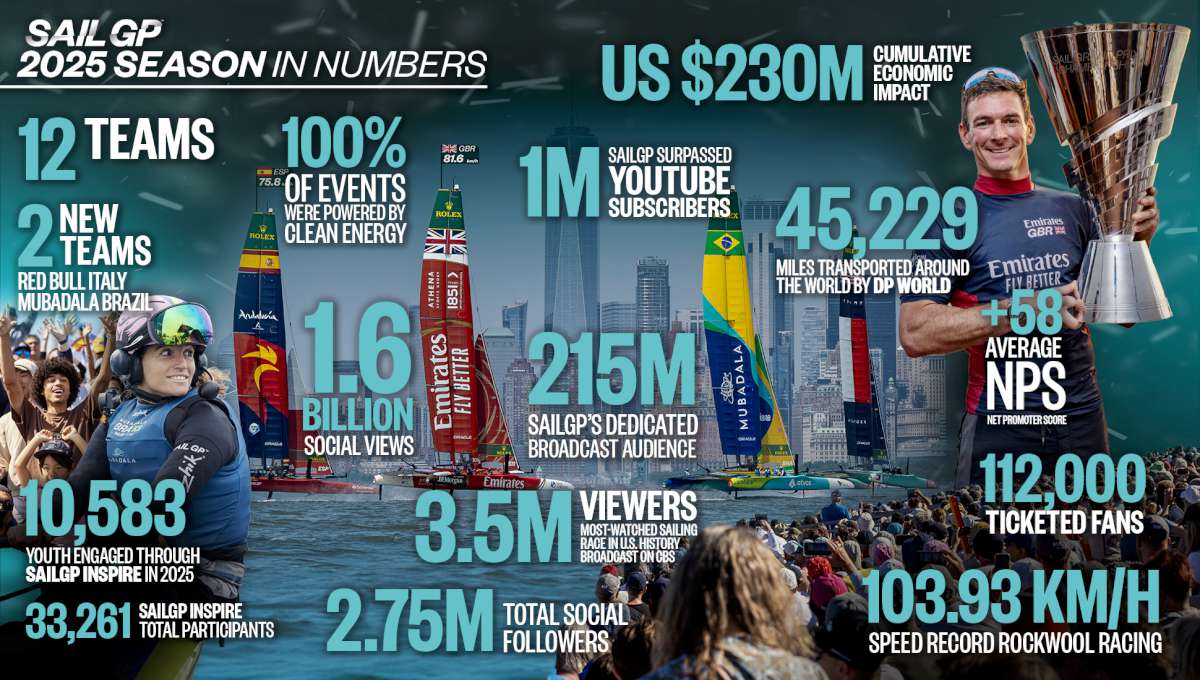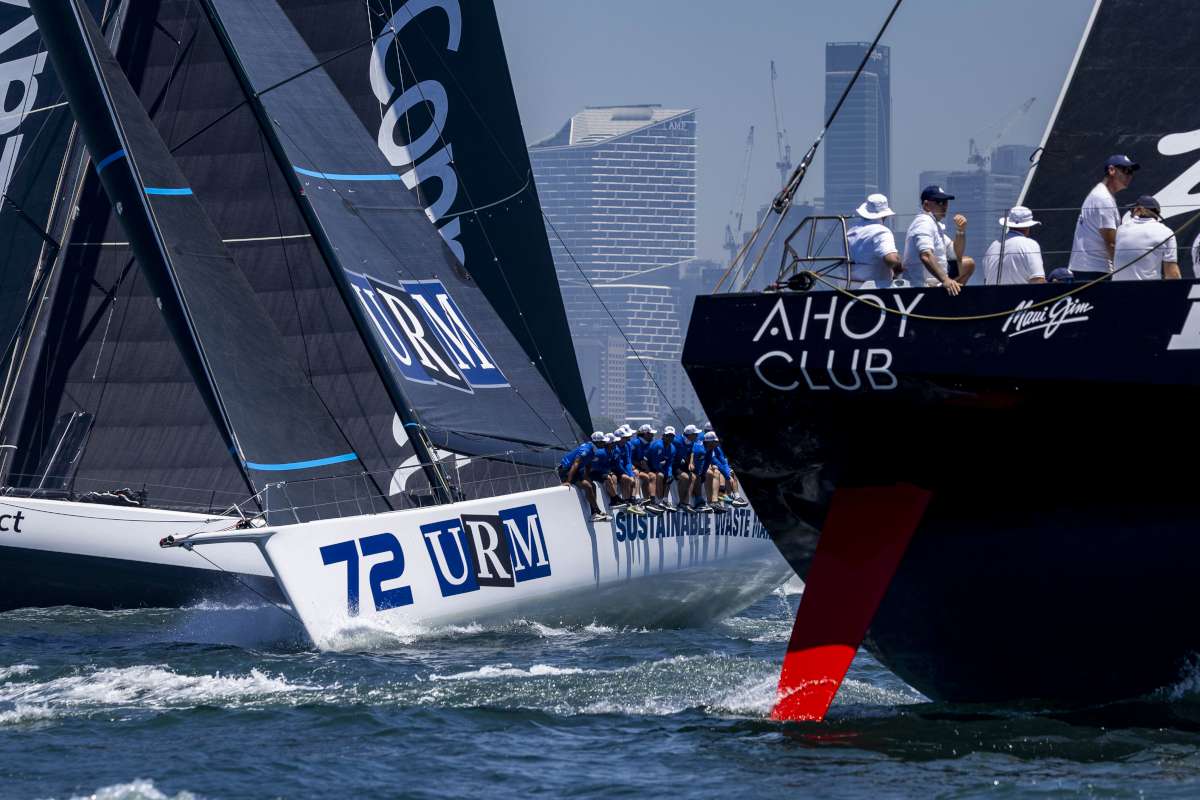Australian yachts arriving home are being told their yachts have to be imported and, perhaps, include a duty to be paid.
When friends left Australia in 2013 they queried entry requirements and were told: “None. Just turn up.” Photos to prove there were no improvements would be an advantage.
Returning almost three years later they were told that because their yacht had been out of the country for over three months it would have to be imported and they should have hired a Customs Agent to export it in 2013. There had been no such requirement then or when they had left on a previous cruise in 1997.
I left Australia in 1999, returning the same year; departed again in 2001, returning 2002 and there was no such requirement. But Customs officers are insisting that departing boats have always had to be exported then imported on their return.
Those of us who have been on the water for a long time know that there was what was commonly referred to as ‘the five year rule’: vessels remaining out of Australia for longer had to be imported and duty paid. My friends were well within that time frame.
But now, different officers were quoting different time limits confusing my friends. One saying 30 days, another three months
and another six months. What is the truth?
As I was busy researching, someone rang Customs for me and the response was “nothing has changed, the five-year rule still applies”. Then I received a confirmation email the next day that added to the confusion.
Two statements conflicted. The first read: “Obtain an export declaration number if your vessel was imported with an import declaration or if your vessel is Australian”. Which indicates that all Australian vessels need to be exported on departure.
Another statement declared: “Masters of Australian or imported vessels may be required to lodge an export declaration for
the vessel if the craft is to be sold or positioned overseas. Goods imported under temporary import provisions must provide proof of export including an export declaration number (EDN). This documentation must be retained as proof
of export for 5 years.”
Note the statement “may be required”, above. Not ‘is required’.
Therefore, a yacht going on holidays should not need to be exported. The officer’s interpretation of the five-year rule may have been confusion on her part where it says documentation must be “retained … for 5 years.”
Following my suggestion, my friends asked where this regulation was written down as they and I, had scoured the department’s website and found nothing. The officer replied, “it’s not written down, it’s just policy.”
So, who makes this policy? And is this ‘policy’, in fact, law and therefore enforceable? After all, if it ain’t written down, it ain’t law!
For once, most departments were prompt but I was shuffled from one department to another and each one would point me to a link which I had already seen, read and found unhelpful. I changed tack from ‘time limit’ to find out when the change from five years to months took place, but Customs continued to deny that there had ever been a five-year rule.
With differing opinions on time limits, denials of the five-year rule and each individual officer adamant that he/she was correct, confusion seemed to rule within the department. We started to wonder if the five-year rule was another one of those requirements that was not written down anywhere and may not have been fact, “just policy” and that is why the newer officers had not heard of it.
But what about getting out?
Getting nowhere, my focus changed to the need to export the vessels when leaving the country. I asked when this regulation came into force but was repeatedly assured that “it always has been”.
If Australia had land boundaries with other countries would we have to export our mode of transport, eg. our cars, when holidaying in an adjoining country? Then import them on our return?
Australia follows the US in many ways, but not in this. An American privately-owned vehicle does not have to pay import duty when returning across one of its borders. Why should we be different?
I was delving deeper and deeper into the mysterious land of the Custom’s Departmental website and found: ‘notes for completing an export document’ where the vessel is obviously considered ‘goods’ despite being the mode of transport.
It requires a ‘unique voyage number’ and also the name of the person taking delivery of the goods, the consignee city or port of discharge. The vast majority of private pleasure boats are not taken overseas to sell so, with no-one taking delivery, no consignee city or port of discharge, why should it be exported?
However, this issue does not appear to be the biggest concern of any of the yachties I spoke to. They were concerned with why they had not been told. If forewarned, they said, they would not be so worried.
Everyone complained about conflicting information but the greatest complaint was the need to hire a Customs Agent at great expense. “The paperwork should be simple enough that we can do it ourselves” and everyone agreed that all requirements should be stated clearly on Department of Immigration and Border Protection’s (DIBP) website.
Customs were unable to supply my friends with the import paperwork to fill out and were by now pressuring them to employ the services of a Customs Agent. Why did the officer not just download the form from their own website?
He gave them the name and phone number of an agent and, although they would have preferred the cheaper option of doing the paperwork themselves, they had no choice but to use the services of the suggested agent at a cost of $385 including GST. Customs, who do not levy any charge, needed a timber inspection certificate, which cost an additional $80. Quarantine clearance was $350, with no mention of GST, for the inspection and disposal of foodstuffs.
Clearance into Australia took seven days to complete.
Returning home to Australia had become an expensive proposition but at least these frustrated yachties could continue the journey to their home port, albeit considerably lighter in the wallet, while I continued researching. In the words of one yachtie, “the costs to clear Customs plus Quarantine fees makes Australia a very expensive country to enter. No wonder foreign yachts are bypassing it.
“General feeling we have picked up from other foreign cruisers is ‘too expensive and too many rules and regulations’. I am now tending to agree with them!”
I have noticed few foreign yachts passing through my home port of Cairns where there once was a constant stream. I put it down to terrorism concerns but perhaps that is not the case.
A friend who delivers million dollar yachts worldwide said “I have found that it’s the so-called ‘free’ countries that are the most difficult to deal with because of all their rules, regulations and high cost. Third-world countries are much easier to visit.”
Unravelling the mystery
I sent more e-mails, asked more questions.
Regarding the five-year rule one officer told me “I have been working in this environment for over ten years and I have never heard of this practice. I cannot find anything to indicate there was a change in practice or that this was previously allowable.” She directed me to the media department.
The information I requested included yachties being forced to employ a Customs Agent because the paperwork is too difficult and lack of information on their website.
I sought clarification in writing rather than links back to their website. I had been sent to so many links that my head was spinning. I believed this was because the officers simply did not know the answers and were fobbing me off. So I asked the media department to do me the courtesy of supplying the answers in a response easily understood by the public.
While collating all the information, I noticed a trend: officers’ lack of knowledge, conflicting and inconsistent information, rules not being written down and a department in utter confusion.
Are these officers not trained well enough? Are rules and ‘policies’ simply handed down by word of mouth from one officer to the next? How can anyone expect consistency if these ‘policies’ are not formalised and written down?
Then information from another source arrived, success at last, or so we thought.
The information had originally come from the small craft section of the Department of Immigration and Border Protection (DIBP and confirmed our belief that private Australian boats did not need to be imported.
A link was given for further information www.border.gov.au/Trav and further questions could also be directed to: yachtreport@border.gov.au.
Smelling success, another yachtie sent off an email and received the following confirmation:
You only require an export declaration if you are permanently departing from Australia. Therefore, a ship or aircraft has been sold and is on a delivery voyage or if it is anticipated that the ship (including small craft) will be disposed of whilst overseas, an Export Declaration should be submitted.
If an Australian based small craft returns to Australia without having being sold or having any modifications or repairs undertaken while overseas, the owners will not be required to complete an Import Declaration on their return to Australia.
There is no time restriction on how long the boat is out of Australia.
The process is the same as when you departed on your previous voyages – except the times for reporting your arrival. The legislation has changed to reporting craft/persons on board 96hrs prior to your arrival. When you last travelled it would have been 48hrs.
Hope this helps.
Happy sailing.
Regards
(Departmental spokesperson’s name removed)
Small Craft Reporting Department of Immigration and Border Protection
This officer must have found this information somewhere. It made total sense. It now seemed that finally I had the information I sought, so I notified my friends.
They immediately emailed their contact at DIBP with this information. Still annoyed about the unnecessary agent’s fee, they
hoped to have it refunded but also wanted the matter cleared up for all other yachts travelling offshore.
But our jubilation was short-lived. There are so many departments within DIBP that one does not seem to know what another is saying or doing. The ‘higher-ups’ in the department soon began backpedalling and within a day the original correspondent from Small Craft Reporting had sent e-mails withdrawing the information previously given. One was forwarded to me. This time the e-mail came under the banner of Strategic Border Command.
Within hours I was contacted by the media dept. with their official line and clarification of the situation. It also demonstrated that advice from officers regarding the different time limits was wrong:
Hi Rosemary
Please attribute the below response to a spokesperson for the Department of Immigration and Border Protection.
When a small craft departs Australia for a place overseas it is exported and an export declaration is required.
On departure a certificate of clearance is issued that includes the port overseas to which the craft is departing.
The requirement to export goods, in this case small craft, when they depart Australia and arrive at a place overseas is not new.
There are no limitations on the period of time for which the craft may remain overseas.
There is no mandatory requirement for a customs broker to undertake the clearance formalities however it is generally recommended.
When small craft arrive in Australia under their own steam, they go through a clearance process which provides an opportunity for all border formalities to be completed.
An Australian small craft will be considered returning Australian goods. A duty and tax concession exists for returning Australian goods which has the practical effect of no customs duty or goods and services tax (GST) being payable for the returning small craft. This concession is claimed by lodging an import declaration quoting the relevant concession.
The onus is on the importer to prove the goods have not been improved in value since they were exported. Goods that are returned to Australia will have a duty rate of free if they have been exported from Australia and returned to Australia without having been subject to any treatment, repair, renovation, alteration or improvements that add value since their export.
There are other concessional treatments available such as Item 35 of Schedule 4 to theCustoms Tariff Act 1901. This maybe applied where the costs of upkeep; maintenance and repairs (and refit if necessary) can be declared separately to the base cost of the small craft. The small craft is treated concessionally (no duty payable) however duty and GST is payable on any cost of repairs etc. that have added value GST is payable on the full value of the small craft if the same conditions as described above are not met.
Information about importing a yacht can be found on the Department’s website here: www.border.gov.au/Trav/Ente/Avia/Maritime/Importing-a-yacht.
Requirements for yachts and pleasure craft can be found on the Department’s website here: www.border.gov.au/Trav/Ente/Avia/Maritime/Requirements-for-yachts-and-pleasure-craft.
Kind regards
While every yachtie I contacted was unhappy about the export/import procedure, they were prepared to follow the correct procedure.
Once again, the main complaint was the information is not readily available; information given by officers is conflicting; website information is confusing and paperwork is not easy for the average yachtie to fill out. Long-time yachties become frustrated when told that information that they know to be true, is not.
Also, the department seems to be trying to push Customs Agents onto yachties and could appear to be reluctant to help by not making the paperwork available. However, the export and import documents are on their website and can be downloaded.
In the last year there have been many changes within the department. As well as the name change in an issue of Border News I noticed several issues including ‘Border changes’ and ‘Australian Border Force Bills passed by Parliament’. I highlighted each issue in turn, clicked the link to Border News and pasted them in the search bar. Both had the same result: ‘nothing here matches your search’!
So, I ask the question here: how can we be expected to know requirements if a) officers do not have the knowledge or don’t have the means to find out; b) requirements are not written down and just passed along by word of mouth;
c) the website is confusing and contradictory?
There is certainly a lack of communication between the various departments within DIBP and it would appear that there is no-one watching over them to make sure they are doing things correctly. There is certainly no-one to complain to.
In conclusion, it does appear as if the procedure for departing and returning to Australia does now entail exporting and importing your vessel. I would suggest downloading the relevant documents and seeking advice from a friendly Customs officer beforehand on how to fill it out, unless you are happy to pay the high agent’s fee.
Also, take photos of the boat, inside and out, before departure to prove no improvements.
Not finished yet
While I was researching the above, another matter was raised regarding wooden boats and boats with wood components entering the country.
The specific question related to a timber Kiwi vessel that was planning on ‘passing through’ on its way home to New Zealand. In this case I was advised: “an import permit is not required but there are conditions which need to be met and documents to be provided to demonstrate compliance. The vessel will need to be inspected and treated if any contamination is detected.”
There is a lot of information for owners of these boats on the following website: www.agriculture.gov.au/biosecurity/avm/vessels/importing-vessels/questions-and-answers to guide you thoroughly through. But the short answer is that all boats, whether international or Australian, will be inspected on arrival in Australia.
A timber pest inspection will be conducted by accreditedseaports officers at the time of the initial pratique inspection. If this is all that is required the cost should be $80 for the certificate, the same as my friends with the import problem.
Depending on the results of the documentation assessment and/or the initial biosecurity inspection, vessels arriving in Australia will be assessed as either low risk or high risk for timber pests. Those assessed as low risk will be released if no other biosecurityintervention is necessary. Vessels arriving without the required documentation and/or vessel history will automatically be regarded as high risk vessels.
Documentation could include vessel log book, vessel travel history, treatment certificates, manufacturer’s declaration, commercial invoices, maintenance records, overseas government documents, surveyor reports, photographs.
Ifvessels are assessed as high risk at the original pratique inspection and an insect infestation is detected, immediate department intervention will be required at the owner’s expense. This may include various visual timber inspections by government accredited inspectors/entomologists, as well as private termite detector dog services (the DIBP would not be quoted on this).
To minimise inspection costs, vessels must be presented for inspection at larger ports when and where the departmental timber vessel inspectors are available.
Owners are responsible for the cost of all inspections and any treatments required by the department to resolve the biosecurity status of the vessel, including travel costs if a department timber inspector/entomologist, alternative inspection provider or treatment provider is required to travel to the inspection location. Fees and charges can be found on the department’s website.
– Rosemary Jilderts

























